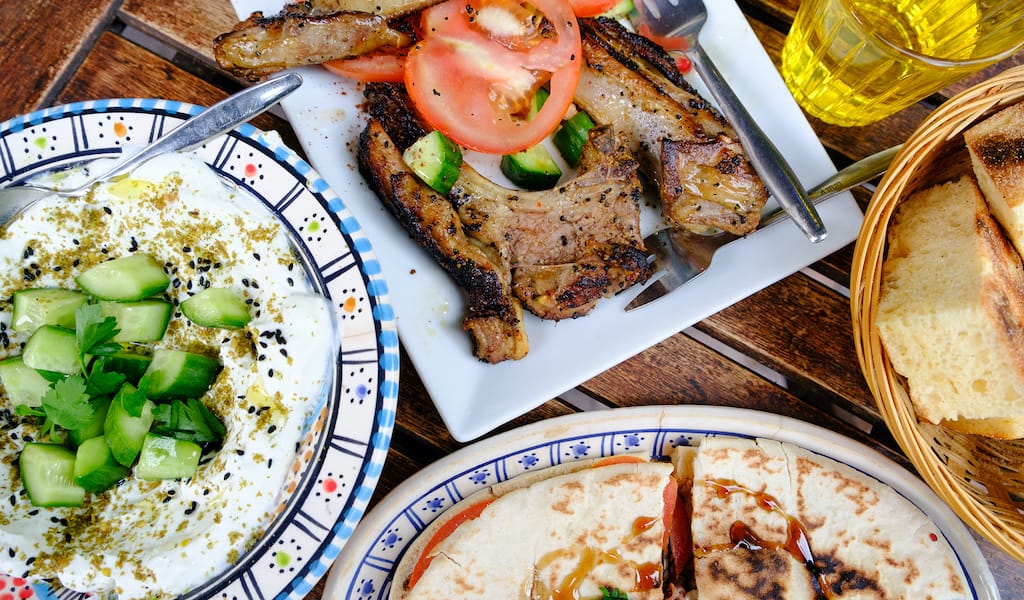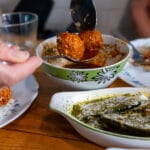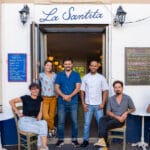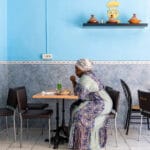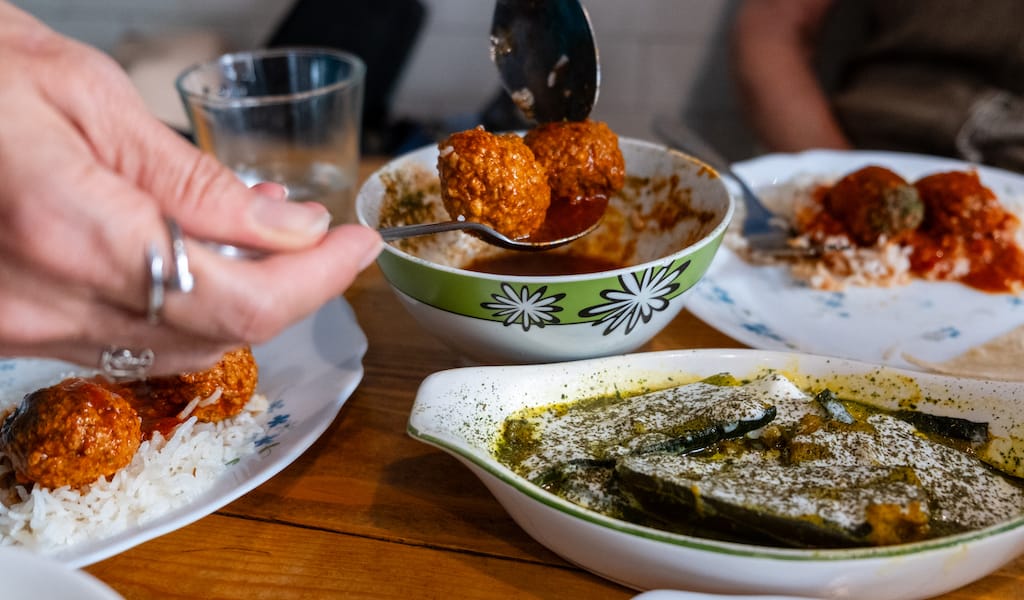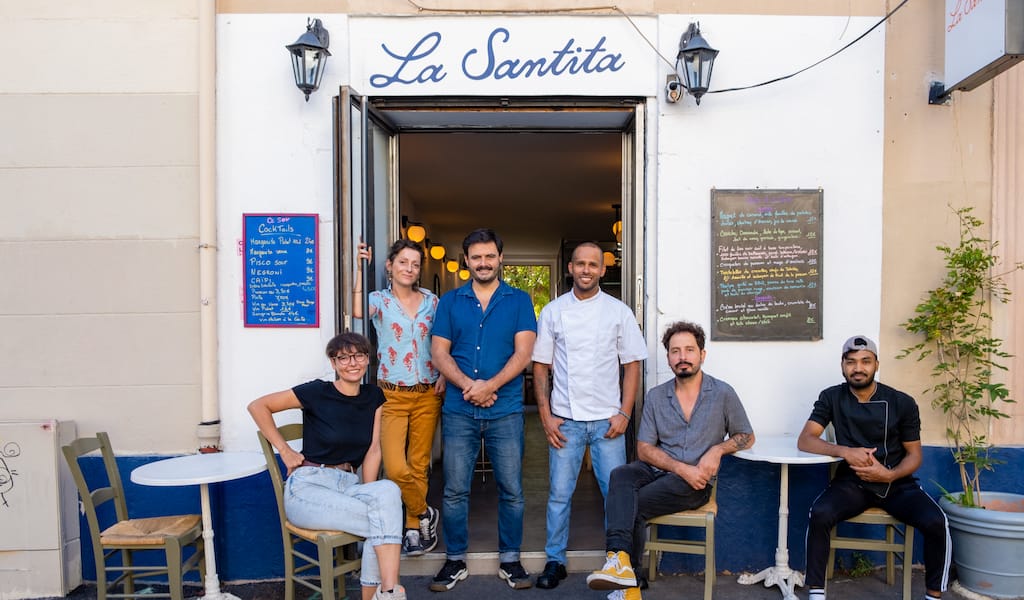Marseille does not resemble the picture-postcard version of France. The locals here have a saying, “D’abord, on est Marseillais, ensuite on est Français.” (First, we’re Marseillais, and then we’re French.) It is a city connected by a rich immigrant population and small neighborhoods, each with their own personality and identity. One of the most vibrant pockets of the city is Cours Julien, or Cours Ju, as it is called here. If the Vieux Port is the heart of the city and Noailles is the stomach, what does Cours Julien represent? On a recent visit to the neighborhood, that question was answered.
 The tiny streets are crowded with small boutiques, tattoo shops, bars and restaurants, all camouflaged by the work of graffiti artists. A writer friend from New York City used the term Hippie-Punk to describe the vibe in Cours Julien, and it fits. Part chill, part rebel. It harkens to NYC’s Lower East side or Five Points when street artists were celebrated. The centerpiece of the neighborhood is a large esplanade surrounded by cafés and eateries. Typically blanketed in sunshine, people lounge at tables, enjoying an apéro or a meal. Musicians gather and kids play an impromptu game of football.
The tiny streets are crowded with small boutiques, tattoo shops, bars and restaurants, all camouflaged by the work of graffiti artists. A writer friend from New York City used the term Hippie-Punk to describe the vibe in Cours Julien, and it fits. Part chill, part rebel. It harkens to NYC’s Lower East side or Five Points when street artists were celebrated. The centerpiece of the neighborhood is a large esplanade surrounded by cafés and eateries. Typically blanketed in sunshine, people lounge at tables, enjoying an apéro or a meal. Musicians gather and kids play an impromptu game of football.
Just as the sun falls, by chance, we stumble upon Asabiya, a mezze restaurant and bar that specializes in Lebanese and Levantine cuisine. Outside the restaurant, musician Jean-Baptiste Gaudrat plays Django Reinhardt tunes on his guitar. Under trees lit by guirlandes guinguettes (strings of colored lights), tables are crowded with diners.
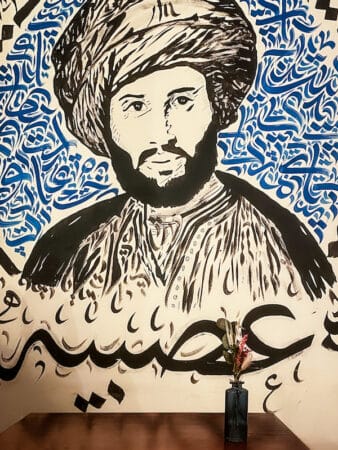 We are greeted by proprietor Paul Khouri, who seats us at a table by the door. The room is intimately lit. There is a small bar for cocktails, wine or beer, and a raised platform where musicians perform. In the center of the room is a large mural of 14th-century Arab historian and social scientist Ibn Khaldun, painted by Ahmed Naquib, a Marseille-based artist. Paul tells us that Khaldun and his concept of Asabiya was the inspiration for the restaurant. In The Muqaddimah, considered a masterpiece and the foremost Islamic history of the premodern world, Khaldun defines the philosophy of Asabiya, which translates to “solidarity” or “social cohesion.”
We are greeted by proprietor Paul Khouri, who seats us at a table by the door. The room is intimately lit. There is a small bar for cocktails, wine or beer, and a raised platform where musicians perform. In the center of the room is a large mural of 14th-century Arab historian and social scientist Ibn Khaldun, painted by Ahmed Naquib, a Marseille-based artist. Paul tells us that Khaldun and his concept of Asabiya was the inspiration for the restaurant. In The Muqaddimah, considered a masterpiece and the foremost Islamic history of the premodern world, Khaldun defines the philosophy of Asabiya, which translates to “solidarity” or “social cohesion.”
Born in Caen, Normandy, to a French mother and a Lebanese father, Paul studied political science in Lyon. After university, he spent time in the Middle East learning Arabic and working as a journalist in Cairo and Beirut before moving to Marseille in 2020. A natural host, Paul has always enjoyed cooking for and entertaining his friends. He had the idea of opening a place that was not only a restaurant, but a place for live music, DJs, comedians, readings and speakers. Together with 15 friends from Marseille, Normandy, Lyon, Egypt and Lebanon, they pooled their money and opened Asabiya.
 Paul elaborates: “Asab means a nerve. So, the theory of Asabiya, it’s like the nervous system; it is the interconnection between people. A total of 15 friends work in our company. So the point was to highlight the group effect and solidarity. Solidarity between us and the social action we can achieve through Asabiya. We want to be community-minded. Society works within groups, not just individuals, society as an entity where everything is connected. So this is our commitment: this concept of Asabiya.”
Paul elaborates: “Asab means a nerve. So, the theory of Asabiya, it’s like the nervous system; it is the interconnection between people. A total of 15 friends work in our company. So the point was to highlight the group effect and solidarity. Solidarity between us and the social action we can achieve through Asabiya. We want to be community-minded. Society works within groups, not just individuals, society as an entity where everything is connected. So this is our commitment: this concept of Asabiya.”
Paul puts this philosophy into action with the restaurant. They work with two NGOs, Fair Trade Lebanon and France Import Palestine to order all their spices, dry goods and oils. They also work with Les Frigos Solidaires, an organization that fights food waste. Paul is proud that Asabiya has partnered with these associations to source for the restaurant – it is, for example, the only restaurant in Marseille to serve Taybeh, a Palestinian beer.
 The menu is comprised of mezze plates inspired by Paul’s time in the Middle East, with 14 different options and a chef’s daily mezze. It is difficult to choose – everything looks appealing. We decide on labne, a luscious cross between strained yogurt and a creamy cheese; muhamarra, a purée of roasted red pepper, spices and walnuts, drizzled with pomegranate molasses; and arayess (Paul’s favorite), pita stuffed with kefta, tomatoes and Kashkaval cheese, then grilled. The chef’s mezze du jour was spiced grilled lamb chops, a must. We are served a basket filled with two types of flatbread: Armenian lavash and Moroccan khobz.
The menu is comprised of mezze plates inspired by Paul’s time in the Middle East, with 14 different options and a chef’s daily mezze. It is difficult to choose – everything looks appealing. We decide on labne, a luscious cross between strained yogurt and a creamy cheese; muhamarra, a purée of roasted red pepper, spices and walnuts, drizzled with pomegranate molasses; and arayess (Paul’s favorite), pita stuffed with kefta, tomatoes and Kashkaval cheese, then grilled. The chef’s mezze du jour was spiced grilled lamb chops, a must. We are served a basket filled with two types of flatbread: Armenian lavash and Moroccan khobz.
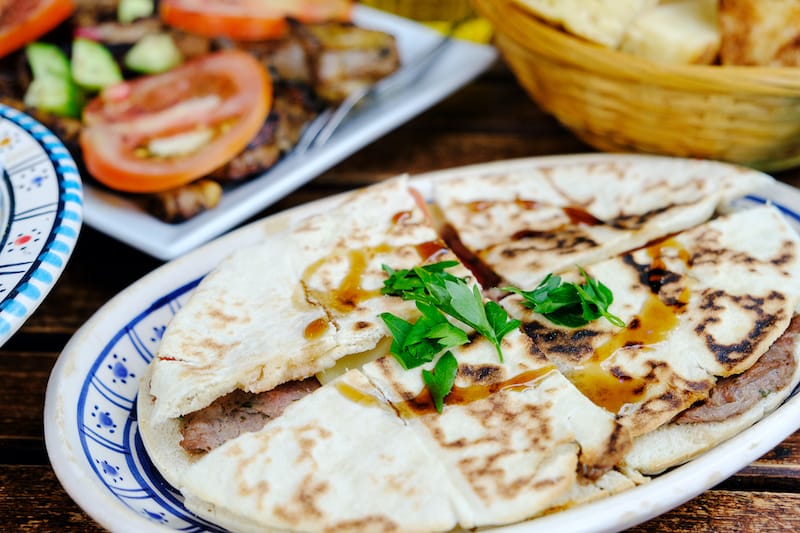 Paul’s grandmother, Loris, taught him to cook while he spent summers with his family in the village of Rahbé in northern Lebanon, about 15 miles from the Syrian border. From the age of eight years old, he observed her in the kitchen, learning her secrets. “When I entered my grandmother’s kitchen, the smell of the labne was strong because they have they didn’t have the industrial milk we have today. It was milk right from the cow. So it is a powerful memory.”
Paul’s grandmother, Loris, taught him to cook while he spent summers with his family in the village of Rahbé in northern Lebanon, about 15 miles from the Syrian border. From the age of eight years old, he observed her in the kitchen, learning her secrets. “When I entered my grandmother’s kitchen, the smell of the labne was strong because they have they didn’t have the industrial milk we have today. It was milk right from the cow. So it is a powerful memory.”
He still uses her method and invites us into the kitchen to watch his process. He also shows us how he makes hummus, using chickpeas, labne, tahini and lemon juice. “I like to cook, take care of people and feel that guests are comfortable at my place. I like to host people and organize parties. Since I was a kid, my house was always the place where all my friends came to hang out. They didn’t need to call; the doors were always open. Maybe it’s part of Arabic and southern French culture.”
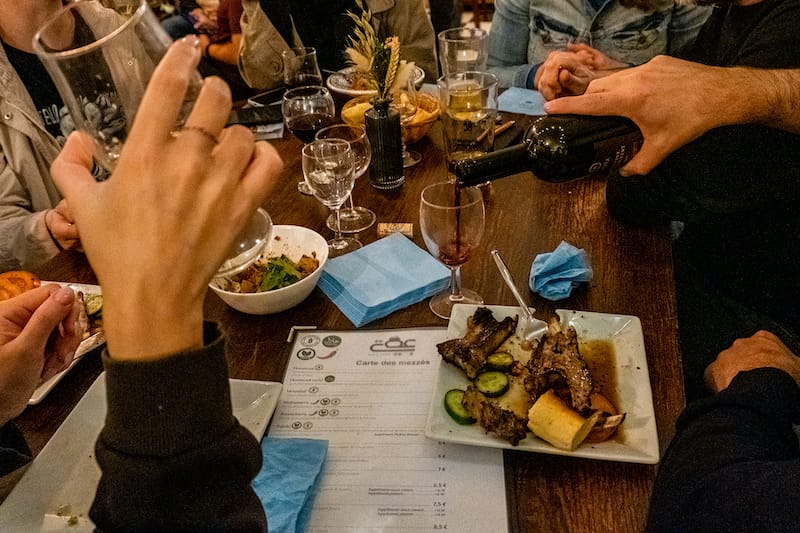 Besides the delicious food that draws a crowd, the restaurant has also become a known spot for local musicians, DJs, and stand-up comedians. At the beginning, Paul looked for people to perform, but now word spreads easily; artists and speakers approach him because they have found a place where they feel comfortable. In December, Asabiya hosted journalist Marwan Chahine and political researcher and university professor Ziad Majed, to speak about the economic crisis in Lebanon. The space also hosts weekly Arabic classes. We learn that Asabiya is celebrating its one-year anniversary the same week we visit to eat. Paul says he is happy with the success of the restaurant and the concept of the mezze bar with cultural events. He hopes to open other places with the same concept, perhaps even in Paris.
Besides the delicious food that draws a crowd, the restaurant has also become a known spot for local musicians, DJs, and stand-up comedians. At the beginning, Paul looked for people to perform, but now word spreads easily; artists and speakers approach him because they have found a place where they feel comfortable. In December, Asabiya hosted journalist Marwan Chahine and political researcher and university professor Ziad Majed, to speak about the economic crisis in Lebanon. The space also hosts weekly Arabic classes. We learn that Asabiya is celebrating its one-year anniversary the same week we visit to eat. Paul says he is happy with the success of the restaurant and the concept of the mezze bar with cultural events. He hopes to open other places with the same concept, perhaps even in Paris.
Delighted that we discovered this place, we will surely return. Before we leave, we ask Paul about his thoughts on the quartier of Cours Julien. He says of Asabiya’s home, “It is a neighborhood where there is a mix of artists, immigrants, people from all over the world. It’s a place of creativity. And there are no social borders. People can have pink hair, dress as they want. There is more freedom than other places in Marseille.”
Our lingering question is answered. If the Vieux Port is the heart of Marseille and Noailles is the stomach, then Cours Ju is the vigor, the energy, the pulse. It’s the nervous system of the city. Asabiya and Paul Khouri have landed in precisely the right spot.
Published on May 25, 2023
Related stories
April 19, 2024
MarseilleAt the end of a long wooden table, a foursome passes colorful plates of food: mouthwatering meat dumplings in tomato sauce, sauteed zucchini topped with minty yogurt, and rice flecked with cumin. Sitting across from a refrigerator, below a row of fake potted plants, and beside shelves stacked with mismatched plates, they could be dining…
November 7, 2023
MarseilleWe all have our favorite watering hole – that place close to home where you can have a bite to eat, sip on your preferred drink, have a chat with neighbors, friends, strangers. A place where you feel welcome and frequent often. La Santita, a tiny Latin American restaurant located on the tree-lined Boulevard Eugène…
June 29, 2023
MarseilleItalian and Maghreb restaurants are undoubtedly the stars of Marseille’s food scene. In fact, Marseille is so chock-a-block with pizza it’s rumored to have more pizzerias per capita than New York City. Eateries dishing out copious bowls of couscous equally abound. Meanwhile, some of the diverse city’s most prominent immigrant communities – and their cuisine –…







































